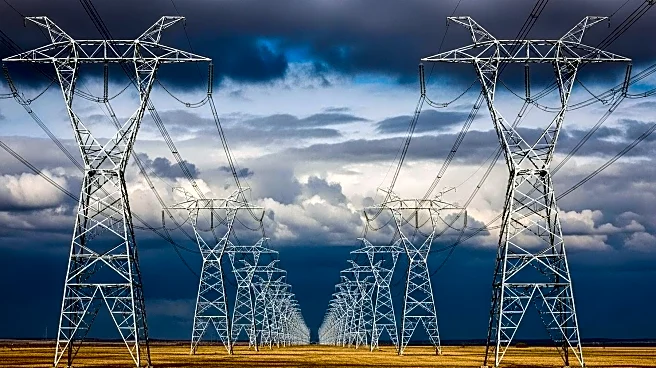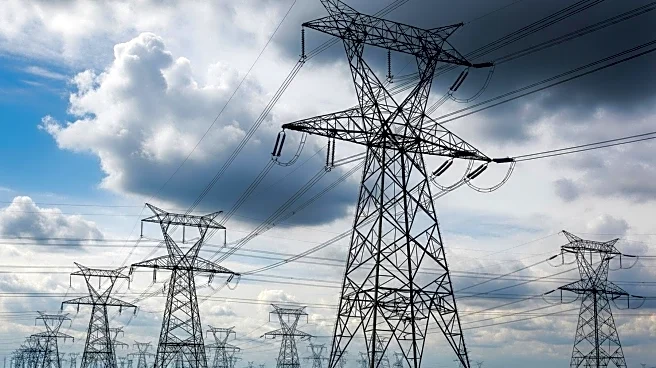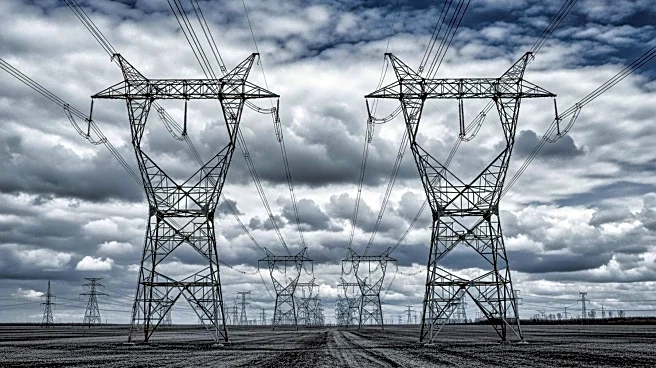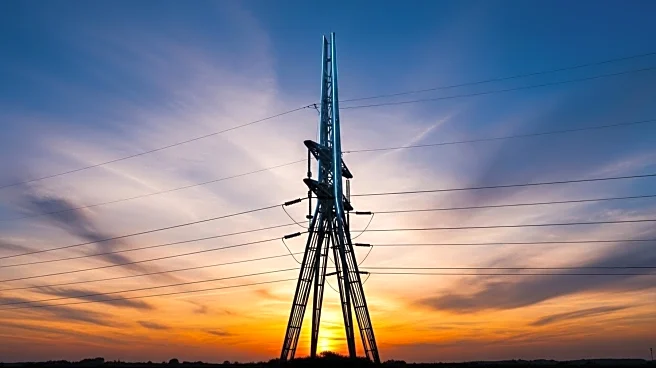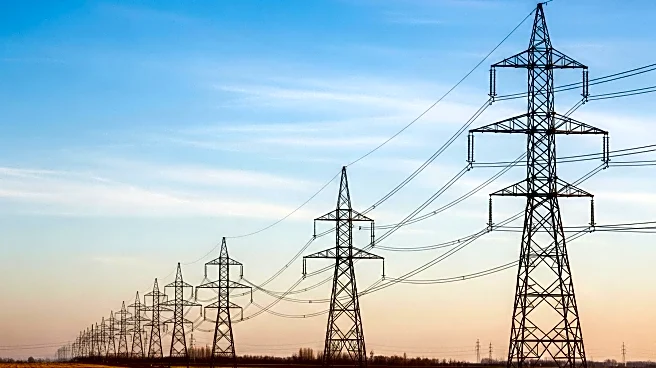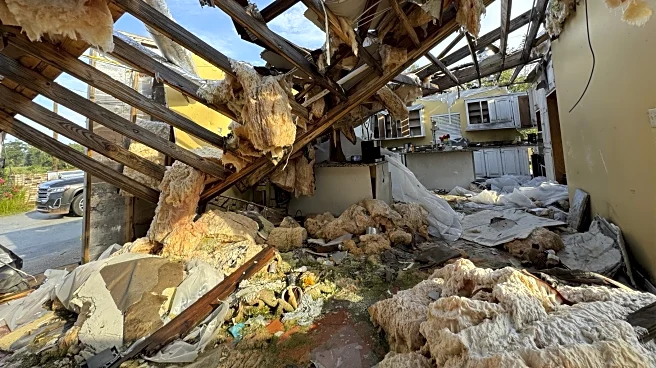What's Happening?
The Midcontinent Independent System Operator (MISO) is facing widespread opposition to its $22 billion Tranche 2.1 regional transmission portfolio. This portfolio, approved by MISO's board in December, includes 24 transmission projects forming a 3,631-mile, 765-kV backbone expected to go online from 2032 to 2034. A complaint filed on July 30 by utility commissions from Arkansas, Louisiana, Mississippi, Montana, and North Dakota argues that MISO used flawed modeling and assumptions, overstating the benefits of the portfolio. MISO has urged the Federal Energy Regulatory Commission (FERC) to dismiss the complaint, stating that the grid operator followed its FERC-approved rules and that critical reliability and generation processes depend on the development of Tranche 2.1.
Why It's Important?
The outcome of this dispute is significant for the future of transmission development in the United States. If the complaint is upheld, it could delay MISO's fast-track review for 26.5 GW in its Expedited Resource Additions Study process, impacting reliability and interconnection processes. MISO warns that terminating or undermining the Tranche 2.1 portfolio could chill transmission development nationwide. The decision by FERC will be closely watched by other regional transmission organizations and providers, potentially influencing future infrastructure investment decisions and the ability to establish global energy dominance.
What's Next?
FERC's decision on whether to uphold or dismiss the complaint will be crucial. If the complaint is upheld, MISO may need to reevaluate its Tranche 2.1 portfolio using updated scenarios and modified benefits assessments. This could lead to delays in building power lines and power plants, threatening reliability in MISO's footprint. Stakeholders, including utilities and ratepayer organizations, are urging FERC to act swiftly to avert potential negative outcomes and ensure the continuation of transmission development.
Beyond the Headlines
The dispute highlights the complexities of transmission planning and the need for robust stakeholder involvement. It raises questions about the balance between regulatory oversight and grid operator autonomy. The case also underscores the importance of accurate modeling and assumptions in infrastructure planning, as these can significantly impact perceived benefits and costs.
